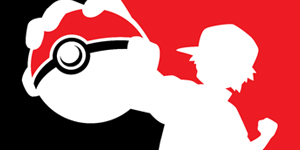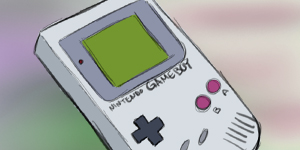Extra: Goodbye, Nintendo Power
Fourteen years is a very long time. In the past fourteen years, we’ve seen three presidents, four Nintendo home consoles, ten Mario Party games, and at least two doomsday predictions (including today’s supposed Mayan apocalypse). For those same fourteen years, I have also been a subscriber of Nintendo Power. Now, with the last Nintendo Power in my hands, the end definitely feels bittersweet. As great as the final issue is with its heavy dose of nostalgia and flashbacks, it’s also a sad reminder that a large part of my childhood and teenage years has come to an end.
My first issue of Nintendo Power dates back to February 1999. Sure, the magazine was already over a decade old at that point, but for me it was just the beginning. The cover story featured a quirky new digital board game called Mario Party. How bizarre, I thought: it’s a board game, but it’s also a video game. After reading the magazine’s preview, I was instantly sold. This was just one of the many times that Nintendo Power hooked me on a game. In the following years, titles ranging from the Nintendo 64’s Super Smash Bros. and Harvest Moon 64 to the Game Boy Advance’s Golden Sun and Tony Hawk’s Pro Skater 2 all became must-haves based on what I read in the magazine.

Simply put, Nintendo Power transformed me from a casual video game player to a hardcore Nintendo fan. Naturally I would hear gaming news from friends, but in the days when the Internet was still finding its footing, Nintendo Power was the go-to source for game news, walkthroughs, and reviews (even if they were a bit biased back in the day). When the E3 issues rolled around, I was glued to them, poring over every mini-preview and hands-on. When I was stuck in Donkey Kong 64 or Super Mario Sunshine, I would flip open their strategy sections. Whatever I needed as a young Nintendo fan, the magazine provided.
As I became more engrossed in the world of Nintendo, in terms of both actual games and participation in online communities such as Nintendo.com’s NSider Forum, Nintendo Power’s role shifted for me. The Internet may have been good for quick tidbits of news, but Nintendo Power still provided extra depth and strategies that nicely complimented coverage on major sites like IGN and GameSpot. More importantly, however, the magazine became a two-way street for me. In 2004, Nintendo Power began publishing excerpts of conversations from the NSider Forum. As a very active member of the community, part of the excitement of receiving each issue was to see if I was quoted. Sure enough, my comments were published in four different issues. Instead of just reading Nintendo Power, I was now part of it.

Over the years, Nintendo Power underwent other changes to adapt to the growing presence of the Internet. A slick redesign unveiled at E3 2005 turned the magazine away from walkthroughs and more towards news and previews. This pit it head-to-head with gaming sites, but a renewed focus on exclusive game previews helped to keep the magazine fresh and something that I still anticipated every month. The magazine’s new angle coincided nicely with the launch of WiiWare and DSiWare a few years later, allowing Nintendo Power to become the main source of news for all of Nintendo’s download services. This trend continued all the way up through the second-to-last issue, which unveiled 3DS eShop title Shantae and the Pirate’s Curse.
Unfortunately, with the rise of social media and Internet accessibility via mobile devices, Nintendo Power’s days were numbered. As other publications died off one by one and gaming news spread faster than ever on the web, it became clear that it was only a matter of time before Nintendo Power would suffer the same fate as magazines like GamePro, Play, and even Sony’s Official US PlayStation Magazine. Nintendo knew this as well, shifting away from Nintendo Power as a major marketing tool to a variety of web-based initiatives. Nintendo Power’s breaking news sections are now tweets and Facebook statuses from official Nintendo accounts. The previews are now Nintendo Direct videos on YouTube. The interviews and developer insights are now Iwata Asks articles on Nintendo.com.

There’s no doubt that Nintendo is poised for the future and delivering news faster and more efficiently than ever, but it’s disappointing that there is no longer a tangible, physical object like Nintendo Power to represent all this information. Maybe it’s just nostalgia talking, but it is nice to be able to flip through old copies of Nintendo Power, reading the pre-release hype for classics such as The Legend of Zelda: Ocarina of Time and games that never saw the light of day such as Twelve Tales: Conker 64. Luckily, the magazines we already have aren’t going anywhere. My fourteen-year history with Nintendo Power will live on, and who knows, maybe the magazine will return one day. If it does, I’ll be there.



